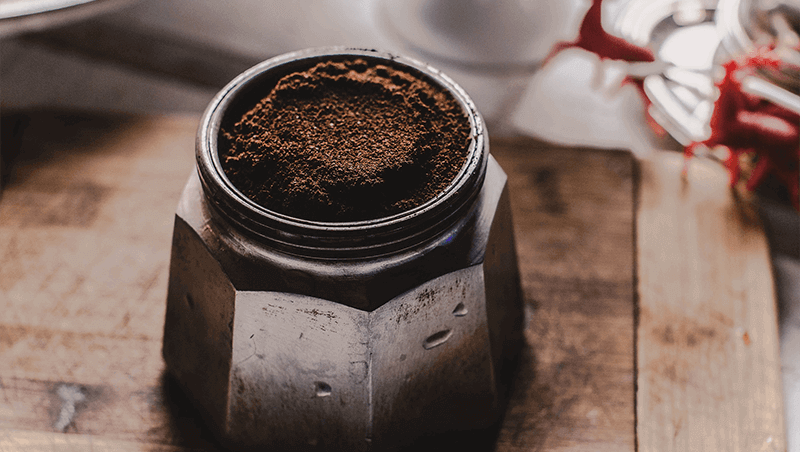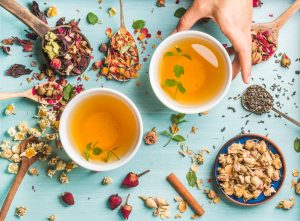Every day, millions of people around the world wake up to make themselves a cup of coffee in the morning before they begin their work for the day. The procedure to make that cup of coffee is something that we are all familiar with and, to most of us, is an ordinary process. But did you know that this process is actually a chemical experiment in progress? The humble cup of coffee, in fact, involves many chemical reactions to become the aromatic beverage that gives you the energy you need through the day. So we thought it’s time for you to know just how much of a science and technical skills is involved in the coffee making process. Put on your goggles, get out your observations books and let’s get started!
It’s all in the bean

The first place to start is at the source of coffee powder: the coffee bean. Naturally green in colour, the coffee bean contains a large amount of chlorophyll, anthocyanins and other colouring compounds in its raw form, giving it a grassy taste. All coffee beans, irrespective of their origins, begin their journey to your cup this way and it is by roasting them that they obtain the rich, brown colour that we all love so much while also gaining richer, more smoky and nutty taste. Roasting can be done either in a pan or in the oven at temperatures between 350 F to 500 F (175 C – 260 C), based on the equipment available, your coffee preferences and your level of patience. In both cases, the beans are constantly moved around to make sure they roast evenly while waiting for them to ‘crack’ indicating that the moisture in them has begun to escape. While stopping at the first crack gives you a light roast which is good for white coffee and special preparations like qahwa, most coffee enthusiasts wait for the second crack to obtain a medium roast for all other forms of the drink. Once done, the beans are cooled for upto 12 hours before they can be ground as freshly roasted beans release CO2, which can make the coffee stale if allowed to build up.
How fine should you grind?

Once the chemistry of coffee brewing has begun, it’s time for physics to take over in the process of grinding the beans. It is important to take care while grinding the beans in order to obtain a better coffee experience as most grinders tend to produce a mix of coarsely ground beans and coffee powder, which reduces the amount of flavour you can obtain while brewing the coffee. This is because finely ground coffee offers more surface area for the water to interact with than coarsely ground coffee, making it more likely that all that lovely coffee flavour will end up in your cup. An easy way to check if you’ve hit the mark is to take a pinch of the powder between your thumb and forefinger: if it clumps together, congratulations; if not, then the grind is still coarse. However, if the coffee beans have been roasted too much, they may end up releasing other chemicals present in the beans that make the coffee more bitter. In such situations, a coarse grind can be your saviour as it allows you to reduce the amount of overall flavour leeched from the powder. Who knew this could be so challenging?
Watch the water

Once the grinds are ready, it’s time to consider the other major component in the coffee making process: the water used. Coffee is acidic in nature, so the water used to brew it must be neutral in nature to ensure the best coffee experience. The levels of bicarbonate and magnesium in the water are a good indication of this: too little bicarbonate and you have soft water, which makes the coffee taste sour; too much, and you have hard water, which makes the coffee taste chalky. Once you’ve got the right kind of water, its temperature and the way it is poured over the coffee grounds is the next thing to consider. The water should come to a boil before being taken off the heat for 1 minute and then poured out in order to extract the most flavour out of the coffee. Most coffee purists still use a filter to make their drink, hence the filter should be cleaned with hot water to make sure no other impurities interfere with the process. The water is then poured in a circular motion from the outside in and is stopped before the dripping process begins, a process known as the ‘blooming’ of coffee. More modern drinkers use a drip machine now, which convert the water to steam and then condense it to automate the pouring process. Once again, to prevent the build-up of impurities, the machine too must be cleaned with a mix of vinegar and water.
After all that effort, your perfect cup of coffee is ready! Don’t you feel like a scientist now, after going through all those processes? There is still one final choice to make though: how much milk to add. But that is a very subjective question so we’ll leave that to you. Do you think we missed out on anything? Let us know in the comments below while you sip your exquisite cuppa!



